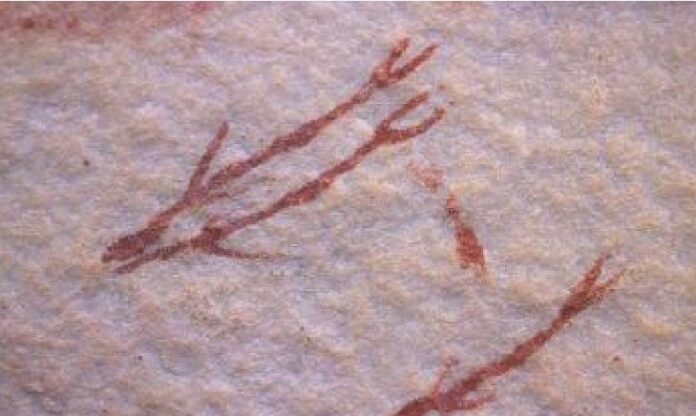The central African agrarian stone art zone has been named the ‘Schematic Art Zone’ by J. Desmond Clark, discovering almost 3,000 agrarian stone art destinations inside this zone.
Somewhere in the range of the vast majority of these involve superimposed layers of massed, finger-painted, mathematical plans.
The other modest destinations include profoundly stylized and mutilated creature structures and columns of finger specks.
Both appear to have a set of experiences reaching outback a long time.
While the mathematical art consistently overwhelms, the two customs go altogether.
They co-happen across a colossal region and experience a routine track down nearby, yet in just a small number of cases, they would be found together in a similar site.
They appear to close, however, apart. Both exist in a similar overall circulation, in a space that circles the central African rainforests and incorporates: Angola, Zambia, Malawi, northern Mozambique, and the Democratic Republic of Congo.
The predominance of mathematical stone art makes this region promptly particular from Africa’s other agricultural stone art districts.
Paradoxically, contain a high level of brush-painted creatures, people, and human-creature conflations.
The art custom already has little exploration, and there is an inadequate comprehension of the correlation of agrarian stone art in different parts of Africa.
Differences between Southern African San rock art and central African Batwa rock art
Present-day Central Africans recollect these individuals as the Batwa (a word utilized generally in eastern, central, and southern Africa to allude to any autochthonous agrarian individuals).
Many gatherings depict them, and across a broad geographic region, as ‘short-statured, darker looking and shaggy.’
In those spaces near southern Africa, they have recognition as being quickly unmistakable from the San (or Bushmen).
Stone art upholds this division: it is entirely not quite the same as San rock art.
The splitting line between southern African San rock art and central African Batwa rock art follows the Zambezi River and the Anglo/Namibia line.
The remaining archeological parts additionally show solid dissimilarity along this equivalent line.
The later Stone Age lithic advances fluctuated so much that people gave them various names.
Those in southern Africa are known as the Wilton/Smithfield though those of central Africa are known as Nachikufan.
The social differentiation between central, southern Africa tracker finders is subsequently significant.
The main enduring gatherings of central African Batwa are the supposed timberland ‘dwarfs.’
Hereditary investigations seem to affirm the archeological division between the tribal legacy of these gatherings and that of the southern African San.
Geneticists recommend extraordinary artifacts to the division between the San and the Pygmies, maybe with the uniqueness of more than 40,000 years.
Indeed, components inside recorded Pygmy customs assist us with understanding central African stone art.
Dwarf customs, for example, those recorded by Colin Turnbull among the Mbuti, are overwhelmed by two significant services.
The Mbuti call this ‘molimo’ and ‘elima’. Men coordinate molimo while ladies coordinate elima.
The two functions customarily occur in a clearing in the timberland and include singing around open-air fires for a long time after night, at times for up to a month.
Occurence of ‘molimo’ and ‘elima
Molimo frequently occurs after the demise of a significant individual from the gathering or on account of a rough contention, while elima generally checks important ladies’ events like transitioning.
Turnbull portrays how the melodies in the two functions look to draw out the soul of the woods.
In molimo, the soul of the backwoods comes out, and people can regularly hear unearthly the tune enclosing the pit fire in the opacity (the melody is truth be told sung by young men through an extraordinary molimo pipe).
Turnbull claims that the reason for getting down on the timberland soul in these functions is to reestablish congruity inside the camp and the woodland.
He contends that the Mbuti consider this condition of congruity fundamental to permitting the dead to be delivered back to the timberland and giving well-being and fruitfulness to the young ladies.
The stylized creature portrayals mark the images and worries of the service of molimo (explicitly the calling of the soul of the timberland), and the mathematical plans address the ideas and concerns of elima (explicitly fruitfulness and downpour divination).
Summary
The arts came through various gatherings inside a similar society and, together, they structure a theoretical entirety.
This examination is an inspiration by Nimono, who contends that the customs and the stone art are essential to deflecting sex struggle and making concordance and equilibrium.


